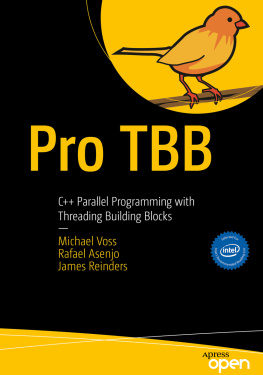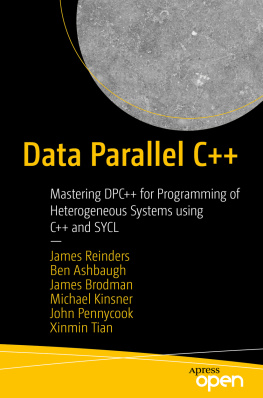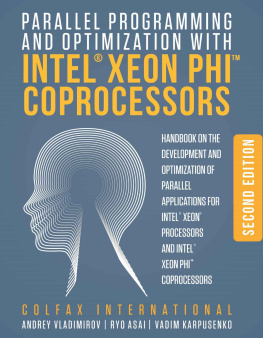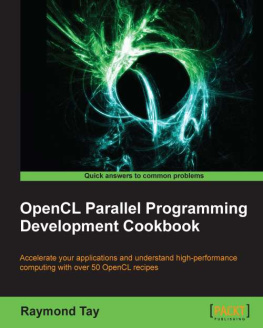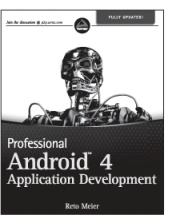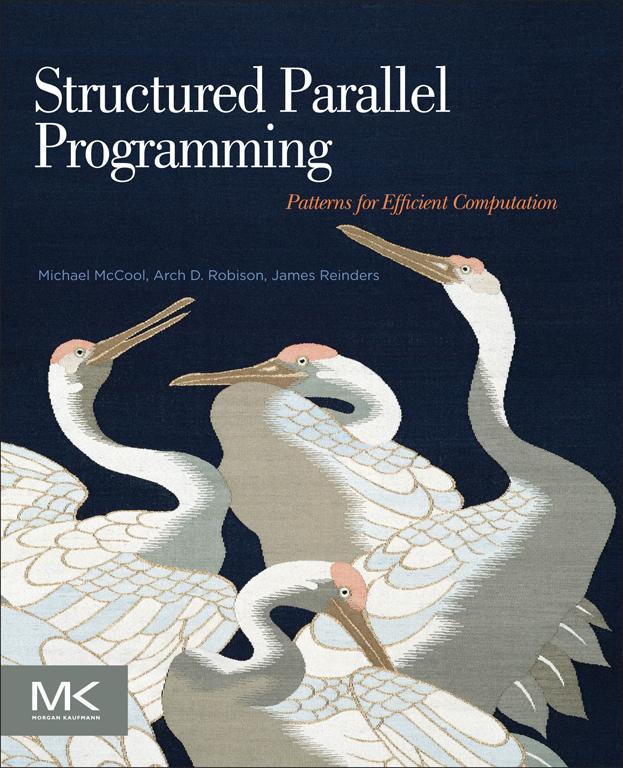McCool Michael Reinders James Robison Arch - Structured Parallel Programming: Patterns for Efficient Computation
Here you can read online McCool Michael Reinders James Robison Arch - Structured Parallel Programming: Patterns for Efficient Computation full text of the book (entire story) in english for free. Download pdf and epub, get meaning, cover and reviews about this ebook. City: Saint Louis, year: 2014, publisher: Elsevier Science, genre: Computer. Description of the work, (preface) as well as reviews are available. Best literature library LitArk.com created for fans of good reading and offers a wide selection of genres:
Romance novel
Science fiction
Adventure
Detective
Science
History
Home and family
Prose
Art
Politics
Computer
Non-fiction
Religion
Business
Children
Humor
Choose a favorite category and find really read worthwhile books. Enjoy immersion in the world of imagination, feel the emotions of the characters or learn something new for yourself, make an fascinating discovery.

- Book:Structured Parallel Programming: Patterns for Efficient Computation
- Author:
- Publisher:Elsevier Science
- Genre:
- Year:2014
- City:Saint Louis
- Rating:3 / 5
- Favourites:Add to favourites
- Your mark:
Structured Parallel Programming: Patterns for Efficient Computation: summary, description and annotation
We offer to read an annotation, description, summary or preface (depends on what the author of the book "Structured Parallel Programming: Patterns for Efficient Computation" wrote himself). If you haven't found the necessary information about the book — write in the comments, we will try to find it.
Abstract: Programming is now parallel programming. Much as structured programming revolutionized traditional serial programming decades ago, a new kind of structured programming, based on patterns, is relevant to parallel programming today. Parallel computing experts and industry insiders Michael McCool, Arch Robison, and James Reinders describe how to design and implement maintainable and efficient parallel algorithms using a pattern-based approach. They present both theory and practice, and give detailed concrete examples using multiple programming models. Examples are primarily given using two of the most popular and cutting edge programming models for parallel programming: Threading Building Blocks, and Cilk Plus. These architecture-independent models enable easy integration into existing applications, preserve investments in existing code, and speed the development of parallel applications. Examples from realistic contexts illustrate patterns and themes in parallel algorithm design that are widely applicable regardless of implementation technology. The patterns-based approach offers structure and insight that developers can apply to a variety of parallel programming modelsDevelops a composable, structured, scalable, and machine-independent approach to parallel computingIncludes detailed examples in both Cilk Plus and the latest Threading Building Blocks, which support a wide variety of computers
McCool Michael Reinders James Robison Arch: author's other books
Who wrote Structured Parallel Programming: Patterns for Efficient Computation? Find out the surname, the name of the author of the book and a list of all author's works by series.

